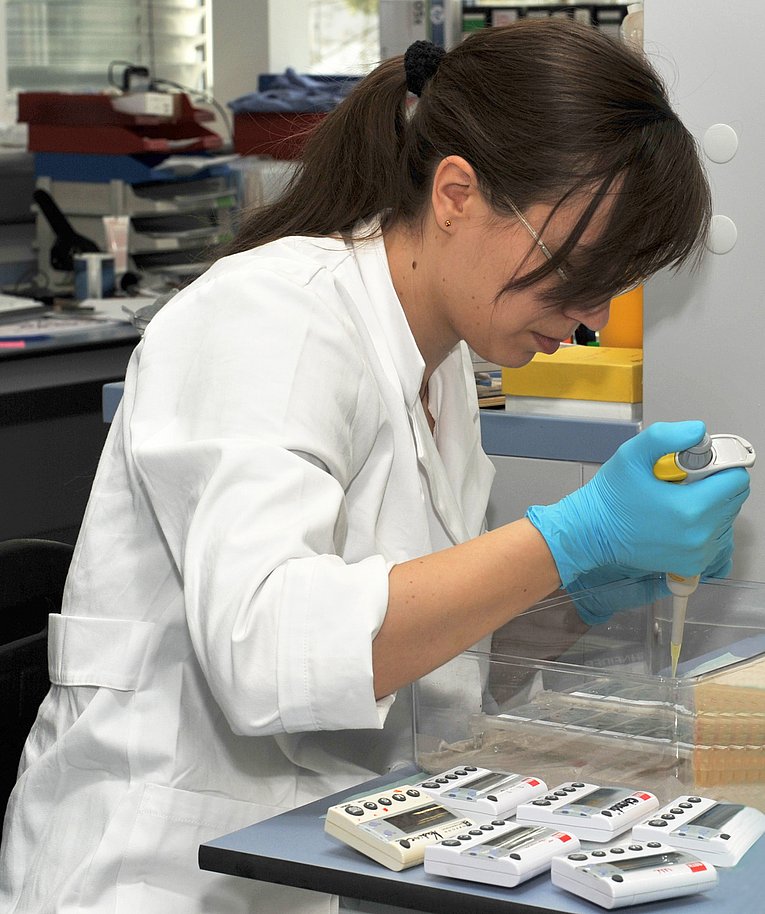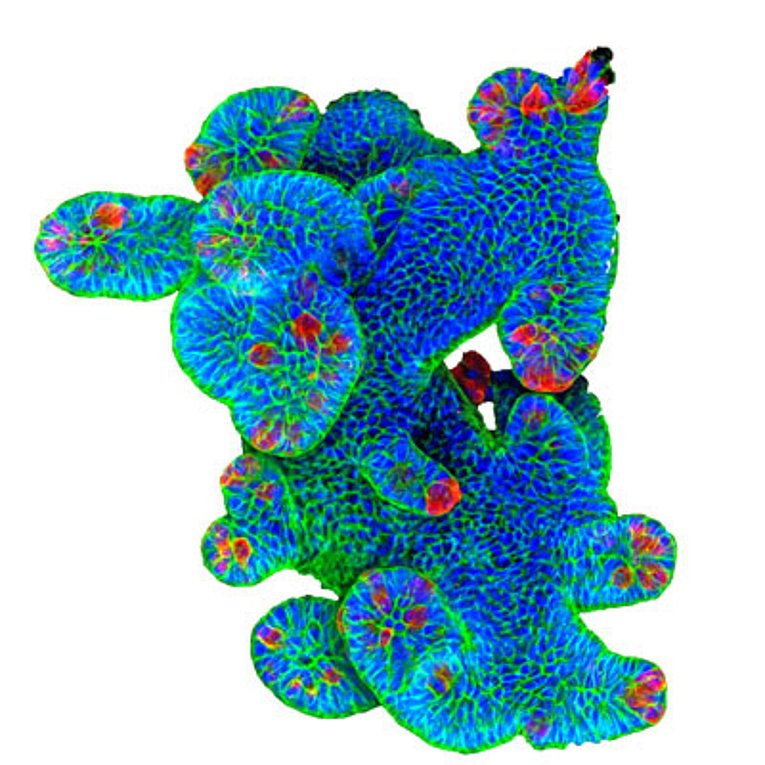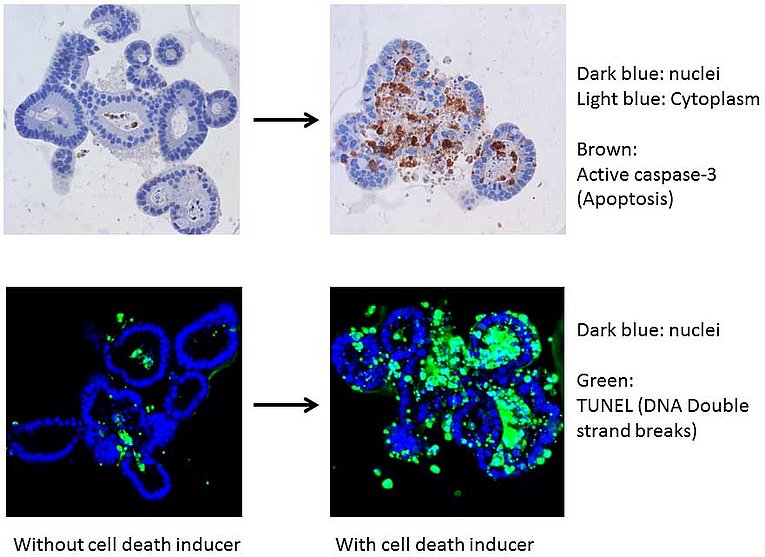
Key techniques of our research group
Joint research with other working groups on a common issue is particularly exciting. We are therefore always open to requests for cooperation.
We have many years of experience in studying the intestine using molecular biological, cell biological and immunological techniques. One methodological focus of our research group is the implementation and evaluation of experimental disease models for inflammation, infection and carcinogenesis in the intestine. In addition, we have extensive experience in performing endoscopic techniques in preclinical models, in conditional mutagenesis of the intestine in the Cre-Lox system (Villin-Cre, Villin-CreERT2) and in the generation and investigation of intestinal organoids in vitro.
Another methodological focus is the bioinformatic analysis of bulk and single cell transcriptomic analyses. In recent years, we have strengthened our bioinformatics expertise and are now able to cover the entire spectrum of data processing, from the preparation of raw data to the detailed analysis of processed data. We have extensive experience in pathway and functional enrichment analyses, which enables us to integrate and interpret even complex data sets in order to deliver meaningful results for our research projects.

In vitro culture of intestinal organoids from intestinal stem cells and crypts
Studies on the intestinal epithelium pose many challenges. Until recently, epithelial cells could hardly or not at all be cultivated in vitro after isolation from the intestinal mucosa, as the cells are dependent on complex interactions with their natural environment and on signals from neighboring cells. In vitro models of the intestinal epithelium, such as monolayer cultures with immortalized cell lines, can help to investigate the effect of individual variables on intestinal cells. However, they cannot reflect the complexity and cellular diversity of the intestinal epithelium. In addition, the immortalization of these cell lines leads to functionally significant genetic changes, so that these cells have a different physiology than the epithelial cells in the intestine. In vivo models, on the other hand, are sometimes difficult to interpret, as experimental observations cannot be directly related to the intestinal epithelium.
In recent years, the method described by Sato et al. in 2009 for the generation of primary intestinal organoids has been established in our laboratory and new experimental applications have been developed. In recent years, intestinal organoids have proven to be a valuable research tool with high physiological relevance for intestinal research worldwide.
Organoids, so-called "mini-guts", are three-dimensional structures of specially cultivated intestinal epithelial cells that reproduce many of the most important properties of the intestinal epithelium. Like the intestine in a living organism, they have a crypt-villus structure surrounding a central lumen. A decisive advantage over other methods is that intestinal organoids contain all known cell types of the adult intestinal epithelium.
Organoids are formed when the intestinal stem cells (LGR5+ cells) contained in intestinal crypts are cultured in a special medium that simulates the intestinal stem cell niche. The stem cells begin to proliferate and the organoid starts to grow. Progeny of these cells leave the stem cell area at the crypt bottom and migrate to the lumen of the organoid. Meanwhile, the cells differentiate into all important cell types of the intestinal epithelium: Paneth cells, goblet cells, enteroendocrine cells and enterocytes. The cells arrange themselves in a crypt-villus structure around a central lumen. Due to the long-term self-renewing potential of stem cells, these "mini-gut" structures can be mechanically dissociated and subcultured indefinitely.
Applications of this method range from research into adult stem cells to tissue engineering with the aim of later transplantation and colon cancer research. The model was used by our research group to characterize growth and differentiation processes in primary cells. Cells from these organoids can be manipulated by transfection, for example. Organoids are also suitable as test models for pharmaceutical drug candidates. In our laboratory, intestinal organoids are cultivated from small and large intestinal tissue. We use them as a valuable model system that provides deep insights into fundamental biological processes of the intestinal epithelium.
Intestinal organoids allow our research group to study cell division rates under different experimental conditions to gain insights into the mechanisms of cell proliferation. By adding immunological or microbial factors or manipulating certain signaling pathways, we can observe how the proliferation of epithelial cells changes in real time and which factors might promote inflammation or tumor formation. In intestinal organoids, cells can differentiate into different cell types found in the real intestine, such as enterocytes, Paneth cells, goblet cells and enteroendocrine cells. This ability makes organoids an ideal model system for us to understand how cells respond to environmental signals that alter the genetic programs of cell differentiation and how these processes might be disrupted in intestinal diseases such as Crohn's disease or ulcerative colitis. Finally, we use organoids in our research on programmed cell death. Intestinal organoids offer the opportunity to study the triggers and the biochemical cascade of events that lead to cell death. We can also investigate how the prevention of cell death affects barrier function and tumor development.

